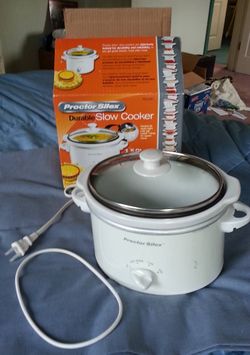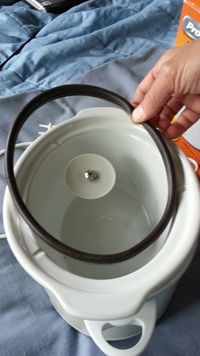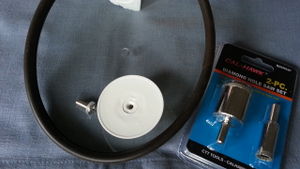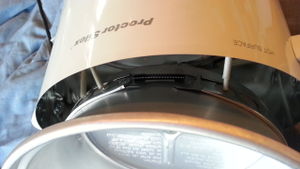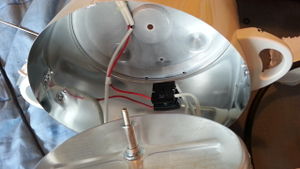Lab Scale Fermentor: Difference between revisions
No edit summary |
m (→Chamber) |
||
| Line 16: | Line 16: | ||
[[File:slowcooker_1.jpg|border|250px]] [[File:slowcooker_lidgasket.jpg|border|200px]] | [[File:slowcooker_1.jpg|border|250px]] [[File:slowcooker_lidgasket.jpg|border|200px]] | ||
---- | ---- | ||
The lid is made of glass. It appears ''not'' to be tempered, as the handle is attached by a screw through a drilled hole. This is good, because it means we can drill our own holes for stirring, sensors, and fluid lines. I will try using some cheap diamond core drills | The lid is made of glass. It appears ''not'' to be tempered, as the handle is attached by a screw through a drilled hole. This is good, because it means we can drill our own holes for stirring, sensors, and fluid lines. I will try using some cheap diamond core drills (the set shown cost $5 on Amazon). | ||
[[File:slowcooker_lid_holes.jpg|border|300px]] | [[File:slowcooker_lid_holes.jpg|border|300px]] | ||
Revision as of 03:29, 29 August 2013
Lab Scale Fermentor
This is a version of the OSE Fermentor primarily for process-development experiments.
It may be used on the Polylactic acid project.
Prototype Development
I have acquired some components and will report here on construction progress of a low-cost "lab scale" (~1 liter) microbe fermentor. ChuckH (talk) 04:48, 29 August 2013 (CEST)
Chamber
Our basic chamber is a small consumer slow cooker ("crock pot"). This unit (Proctor Silex 33116Y) has a glass lid with a soft rubber lip seal and costs about $15.
The lid is made of glass. It appears not to be tempered, as the handle is attached by a screw through a drilled hole. This is good, because it means we can drill our own holes for stirring, sensors, and fluid lines. I will try using some cheap diamond core drills (the set shown cost $5 on Amazon).
The heating jacket is a light-gauge aluminum bowl with a band heater around it. The heater has two elements, measuring 477 ohms and 200 ohms. The front-panel switch selects element 1, element 2, or both in parallel, providing 28W, 66W, and 94W respectively at 115V input. There is no thermostat.
It should be possible to control temperature with an arduino, thermistor, and solid-state relay, without any modification to the internals.
